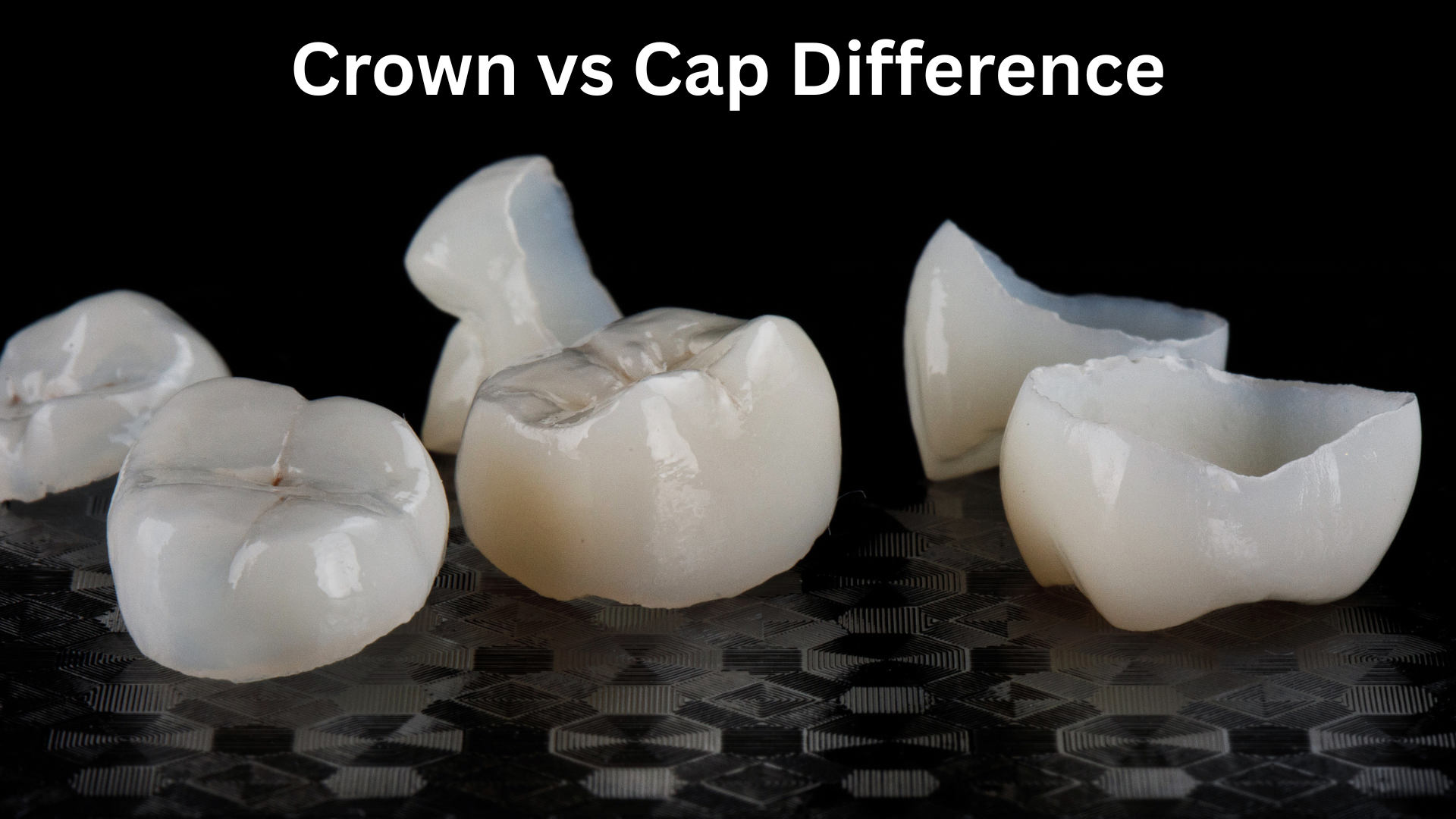
Crown vs Cap difference
When it comes to dental restorations, the terms “crown” and “cap” are often used interchangeably. But is there really a difference? If you’ve ever wondered about the difference between a crown and a cap, you’re not alone. In this detailed article, we’ll explore the truth behind these terms, when each is used, and what you need to know before getting one.
🦷 What is a Dental Crown?
A dental crown is a custom-made restoration that fully encases a damaged or decayed tooth above the gumline. It is used to restore the tooth’s shape, strength, function, and appearance.
Common Uses of Crowns:
- Protect a weak or cracked tooth
- Restore a broken or severely worn-down tooth
- Cover a tooth after a root canal treatment
- Support a dental bridge
- Cover a dental implant
- Improve the cosmetic appearance of a tooth
🦷 What is a Dental Cap?
A dental cap is simply another term for a dental crown. The term “cap” is more commonly used by patients and laypeople, whereas “crown” is the clinical and professional term used by dentists.
✅ Important Note:
There is no functional or structural difference between a cap and a crown. They are two names for the same dental restoration.
🧠 Why the Two Different Terms: Crown vs Cap?
| Term | Usage | Common Among |
| Crown | Clinical/Professional term | Dentists, dental professionals |
| Cap | Informal/Traditional term | Patients, general public |
- “Cap” became popular decades ago when dental restorations started becoming common.
- “Crown” reflects the updated dental terminology and more accurately describes the prosthetic structure.
🔍 Types of Dental Crowns (or Caps)
Whether you call it a crown or a cap, the types remain the same:
- Zirconia Crown
- Porcelain-Fused-to-Metal (PFM) Crown
- All-Ceramic or All-Porcelain Crown
- Gold Crown
- E-max (Lithium Disilicate) Crown
- Metal Crown (Stainless Steel – Temporary)
📋 Crown vs Cap: Indications for Use
| Indication | Explanation |
| Root canal-treated tooth | To prevent fracture post-treatment |
| Broken tooth | To restore function and shape |
| Worn-down teeth | Especially due to bruxism (grinding) |
| Large fillings | When not enough tooth structure is left |
| Cosmetic correction | To improve shape, size, or alignment |
🔄 Crown vs Cap in Different Age Groups
- Adults: More likely to hear “crown” used in dental clinics
- Children: Parents and dentists may use the term “cap” more often, especially for baby teeth
- Elderly Patients: Often use the word “cap” due to its longstanding presence in older dental terminology
💰 Cost Difference Between Crown and Cap
Since crown and cap are the same, there’s no cost difference between the two. However, the cost varies depending on:
- Material used
- Tooth location (front vs back)
- Lab charges
- Dentist’s experience and clinic location
Approximate Range (India): ₹3,000 to ₹15,000 per tooth
In the US: $800 to $2,500 per crown
🧼 Care Tips After Getting a Crown/Cap
- Avoid sticky foods for the first 24 hours
- Brush and floss regularly
- Visit your dentist every 6 months
- Wear a night guard if you grind your teeth
✅ Conclusion: Crown vs Cap — What’s the Final Word?
To summarize, the difference between a dental crown and a cap is purely semantic. Both refer to the same dental procedure used to restore or protect a damaged tooth. If your dentist says you need a crown, and your friend says they got a cap—you’re both talking about the same thing!
Whether you use “crown” or “cap,” what’s important is the health and functionality it restores to your smile.
Related Reads
Complete Guide to Dental Crowns: Types, Materials, Cost & Best Choices for You
Root Canal with Crown vs Without Crown: What You Need to Know
Best Dental Crown for Molars: A Complete Guide
Zirconia vs Porcelain Crown: Which One is Better?
Dental Crown Procedure Step-by-Step: What to Expect Before, During & After
Temporary vs Permanent Dental Crown: Key Differences, Lifespan, Care & FAQs
❓ 10 Frequently Asked Questions (FAQs)
- Is there any structural difference between a crown and a cap?
No, they are exactly the same thing. The difference lies in terminology. - Why do dentists prefer the term ‘crown’?
Because “crown” is the formal, clinical term taught in dental education. - Can I request a specific type of crown or cap?
Yes. Discuss your preferences with your dentist regarding aesthetics, strength, and budget. - Do caps/crowns last a lifetime?
Not always. Most last between 5–15 years, depending on care and material. - Can children get crowns or caps?
Yes. Stainless steel caps are commonly used for decayed baby teeth. - Is the crown placement painful?
No, it’s usually done under local anesthesia, and pain is minimal. - What is a temporary cap or crown?
It’s a short-term cover placed until the final crown is ready from the lab. - Can I eat normally after getting a crown/cap?
Yes, but avoid hard or sticky foods initially. - Do all root canal-treated teeth need crowns?
Most do, especially molars, to prevent fractures. - Are caps used only after RCT?
No. They can be used for cosmetic purposes, large fillings, or fractured teeth.




